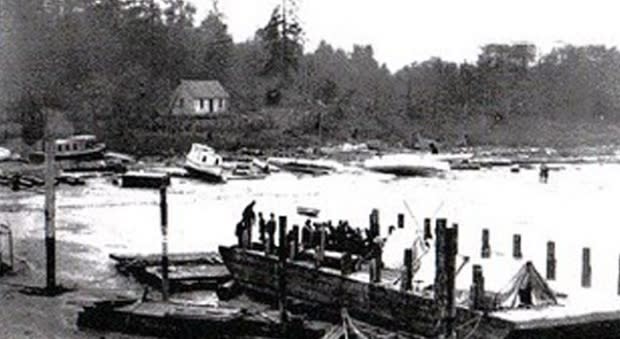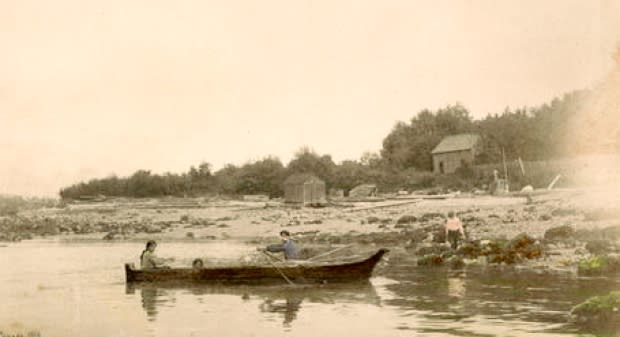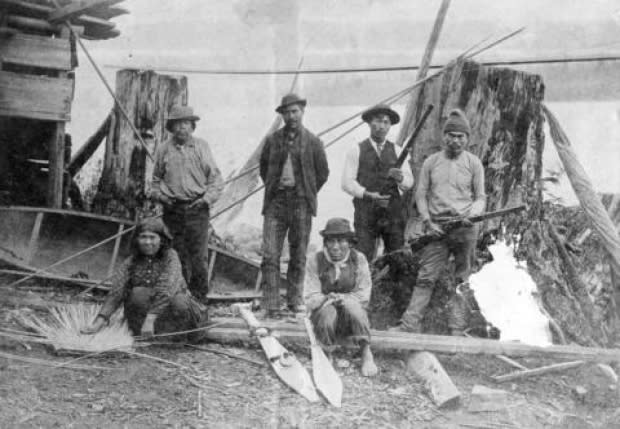The little-known history of Squamish Nation land in Vancouver
The Squamish Nation's proposal to build up to 3,000 apartment units southwest of the Burrard Bridge is shedding light on the historic ejection of members from their traditional territory in the area more than 100 years ago.
The area in question is west of the Molson Brewery site, near Vanier Park on the False Creek waterfront, in Kitsilano.
Some controversy erupted online last week after some Kitsilano residents were quoted as saying they wanted to consult with the Squamish Nation about the development.
But some Indigenous people have pointed out that the Squamish people were never consulted when they were removed from the same piece of land in 1913.
"It's really ironic," said Rudy Reimer, an archeologist with Simon Fraser University, who is also a member of the Squamish Nation.
"We were never consulted and we still are not," Reimer added.
From Sen̓áḵw to Kitsilano
The land the Squamish Nation wants to develop was once part of an ancient village called Sen̓áḵw that was home to about 20 Squamish families or 150 people.
In 1877, under the Indian Act, the federal government allotted about 34 hectares of the land to the Squamish Nation and called it Kitsilano Indian Reserve no. 6.

The namesake comes from a Squamish chief named X̱ats'alanexw or the anglicized, August Jack Khatsahlano.
But the Squamish's home on the Kitsilano reserve didn't last long.
Homes torched
Just 36 years later, the B.C. government under Conservative premier Richard McBride forced the Squamish people to abandon their homes so the city of Vancouver could expand, Reimer said.
It was a product of the federal government's 1911 amendment to the Indian Act, which made it legal to remove Indigenous people from reserves within an incorporated town or city, without their consent.
The residents of Sen̓áḵw were given about two days to pack up and go, and offered a small amount of money to leave, though many didn't want to.

"They were forced off the reserve, out of their homes, put on a barge, and sent over to north Vancouver," said Reimer.
As soon as the Squamish were out, the government burned down their homes and sheds.
From Sen̓áḵw, residents barged to two other Squamish Nation reserves — Mission Indian Reserve No. 1, or Eslha7an, near what is now the Lonsdale Quay, and the Capilano Indian Reserve No. 5, also known as X̱wemelch'stn – both where many Squamish Nation members live today.
Getting the land back
Over the next 100 years, Sen̓áḵw, or Kitsilano Indian Reserve no. 6. was intersected with railway lines, the Burrard Street bridge, and various leases.
The site now includes the Vancouver Museum, the Planetarium, a Molson's brewery, a housing complex and Vanier Park.
In 1977, the Squamish Nation accused the federal government of failing to protect them from their reserve lands being wrongfully taken, according to Squamish Nation historical documents.

In 2000, the nation voted in favour of a $92.5-million land-claims settlement and the return of 11.7 acres of reserve land. The Squamish Nation thus, in 2002 regained a small section of the earlier reserve, today's Kitsilano Indian Reserve No. 6.
This is the area the Squamish Nation is proposing to build on today.
It's a move that could provide homes to the growing nation, but also help with the housing crisis in Vancouver by providing up to 5,000 people with homes.

